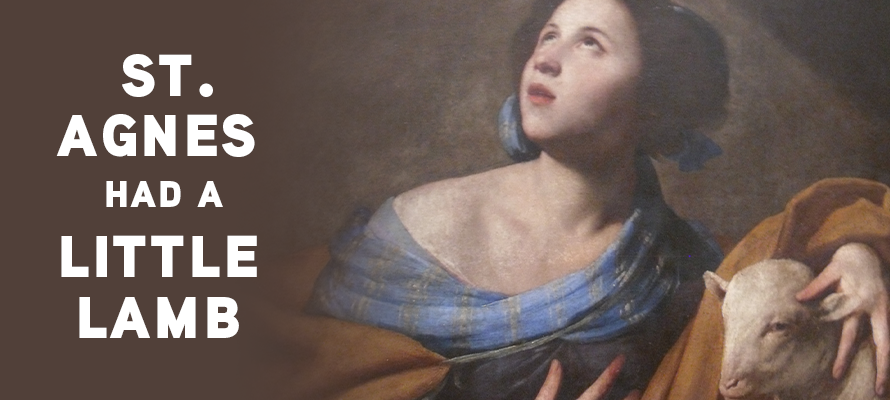
On many Sundays, we hear the name Agnes proclaimed during the Eucharistic prayer after the Consecration. But who was this saint, and what does she have to do with one of the longest Catholic pilgrimage routes in the world?
Venerated in the Roman Canon, along with 6 other women (Felicity, Perpetua, Agatha, Lucy, Cecilia, and Anastasia) and several men, St. Agnes was a martyr of the early Church at only age 13. She had made a personal vow of perpetual virginity and claimed Jesus as her only Spouse. However, many men were attracted to her and were angered at her refusal to marry them. Eventually, she was exposed as a Christian to the government and went joyfully to her martyrdom. Her body lies in Rome under the altar in St. Agnes Outside the Walls, while her skull is preserved in another Roman church - St. Agnes in Agony in the Piazza Navona.
St. Agnes is connected to lambs not only as a symbol of her purity, but also as one translation of her name means “lamb.” On her feast day each year, two lambs are blessed by the Pope. They are then given over to the care of the Sisters living at the Basilica of St. Cecilia in Trastevere. On Holy Thursday, these lambs are shorn, and their wool is used to create the pallium worn by each metropolitan archbishop.
A metropolitan archbishop is one who oversees a diocese or archdiocese that is the largest in their ecclesiastical province. The pallium is a symbol of the authority of the archbishop to govern his diocese and may only be worn in his diocese and in the other dioceses of his province.
The pallium is given by the Pope to new metropolitans on the feast of Sts. Peter and Paul (June 29) each year. The special ceremony of investiture as archbishop with the placing of the pallium on the archbishop now takes place in his home diocese by the apostolic nuncio of the country at some point after the feast of Sts. Peter and Paul. This was changed to allow for more of the local faithful to be present at the ceremony and strengthens the relationship between the archbishop and the flock which he shepherds.
Pope Benedict XVI said the lamb’s wool of the pallium “is meant to represent the lost, sick, or weak sheep which the shepherd places on his shoulders and carries to the waters of life” and reminds bishops to “be shepherds for unity and in unity - and that it is only in the unity represented by Peter that we truly lead people to Christ.”
A bishop must travel to Rome to receive the pallium, a journey which has not always been easy. While today, airplanes and trains make the travel relatively worry-free, ancient bishops did not have such luxuries.
One such bishop was Archbishop Sigeric of Canterbury, who lived in the early part of the 10th century. When he became bishop and received the pallium, he kept detailed notes of his return journey. These notes helped others along their travels to Rome and the 1060-mile path he trod eventually became known as the Via Francigena – or “the French Way” to Rome.
Stay tuned next time for an in-depth look at the Via Francigena.




